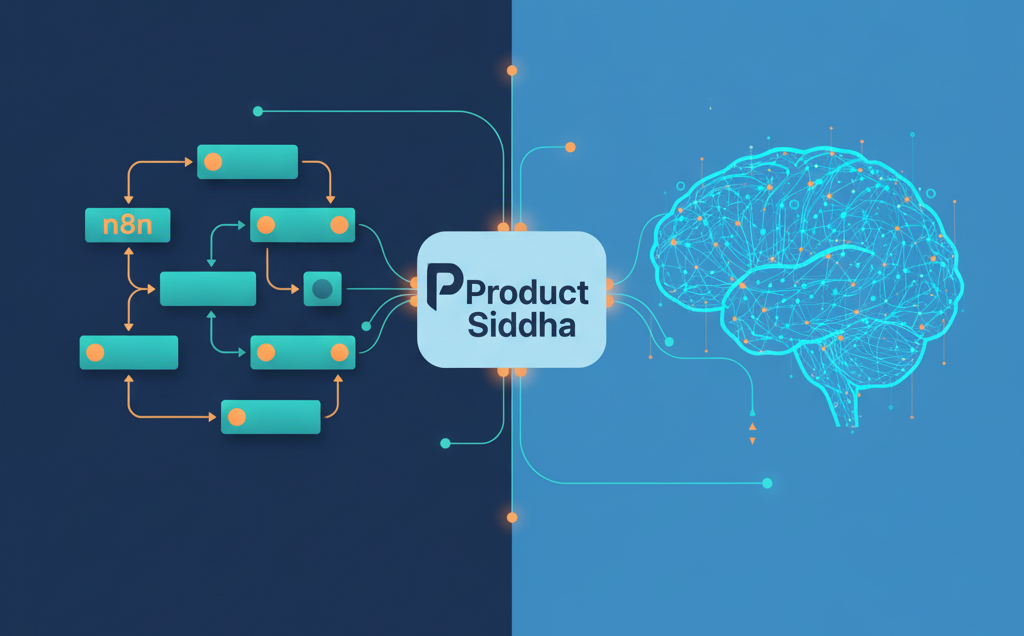
OpenAI’s AgentKit and Agent Builder: Is it the End of n8n?
Rethinking Automation: Where OpenAI’s AgentKit Meets n8n
Artificial intelligence is reshaping how automation platforms function. With the recent introduction of OpenAI’s AgentKit and Agent Builder, discussions have emerged around whether tools like n8n will still hold their ground. While OpenAI’s new frameworks promise a leap forward in creating intelligent agents, the question is not simply about replacement. It is about purpose, flexibility, and the kind of ecosystem each platform supports.
The Rise of Intelligent Automation
Over the past few years, workflow automation has moved from simple integrations to adaptive systems capable of understanding intent. n8n, known for its open-source design, became a favorite among developers and data teams because it allowed complete visibility and control. Users could automate multi-step workflows connecting APIs, CRMs, databases, and analytics platforms without being tied to closed ecosystems.
OpenAI’s AgentKit, however, introduces a different model. Instead of connecting prebuilt tools, it enables developers to create autonomous AI agents that perform reasoning, execute API calls, and adapt dynamically. It integrates closely with OpenAI’s ecosystem, relying on natural language input rather than a visual interface.
This distinction highlights a key divide: n8n focuses on process orchestration, while AgentKit emphasizes intelligent decision-making.
Understanding What AgentKit and Agent Builder Offer
To understand the comparison, it helps to look at what OpenAI has launched.
- AgentKit: A developer framework allowing programmers to build autonomous agents capable of using APIs, performing actions, and managing data through natural language reasoning.
- Agent Builder: A graphical interface aimed at business users to create and manage AI agents without deep programming knowledge.
Together, they aim to make automation conversational and adaptable. In contrast, n8n gives users visual, node-based workflow design. It connects hundreds of applications through a transparent process map that businesses can easily audit and customize.
Why n8n Still Matters
Despite the excitement around AgentKit, n8n holds enduring value for organizations that prioritize data ownership, cost efficiency, and modular flexibility. Unlike closed AI ecosystems, n8n allows complete control over how workflows are executed and stored. This feature is crucial for compliance-sensitive industries like healthcare, finance, and enterprise marketing operations.
At Product Siddha, for example, internal automation systems were built using n8n to unify client onboarding, data collection, and analytics reporting. When third-party services limited API access, n8n’s open framework allowed Product Siddha’s developers to rebuild critical integrations without depending on external vendors. That adaptability is what keeps open-source tools relevant, even as AI-driven automation grows.
In short, n8n gives structure to automation, while AI agents add reasoning to it. The future likely depends on how well both can coexist.
Comparing n8n and AgentKit
| Feature | n8n | AgentKit / Agent Builder |
|---|---|---|
| Type | Workflow automation | Autonomous AI agent creation |
| Interface | Visual, node-based | Conversational / GUI |
| Control | Full transparency and audit trail | Limited interpretability |
| Deployment | Self-hosted or cloud | Cloud-based (OpenAI ecosystem) |
| Ideal Use Case | Data workflows, CRM, marketing ops | Dynamic reasoning, adaptive tasks |
How AgentKit Changes the Conversation
AgentKit’s core advantage lies in autonomous adaptability. Instead of defining every rule, a user can describe a goal, and the agent figures out how to achieve it. For instance, a content operations team might ask the agent to “prepare next week’s publishing schedule based on engagement data.” The system could then fetch metrics, suggest topics, and even draft outlines.
While this seems revolutionary, it also introduces challenges in predictability and compliance. Businesses cannot always rely on autonomous reasoning where audit trails and consistency are required. This is where n8n’s structured workflows remain valuable. Each step is visible, reversible, and governed by logic that can be documented and improved.
For now, AgentKit may excel in creative or exploratory tasks, whereas n8n continues to dominate operational automation that demands stability and traceability.
Case Study: Combining n8n with AI Agents at Product Siddha
At Product Siddha, the engineering team experimented with hybrid automation – combining n8n’s workflow structure with AI-powered decision layers. For instance, in a client project related to marketing analytics automation, Product Siddha used n8n to orchestrate data movement across CRM, email systems, and visualization dashboards. An AI layer (using GPT models) was added to interpret performance anomalies and trigger specific workflow paths.
This hybrid design reduced manual intervention by 42% while preserving transparency. It also demonstrated that AI and n8n do not compete but rather complement one another when engineered with clarity and control.
Such real-world applications highlight that n8n is far from obsolete. Instead, it can become the foundation that anchors AI decision-making into repeatable, compliant workflows.
A Balanced View of the Future
While OpenAI’s AgentKit and Agent Builder open a new frontier, they are unlikely to replace n8n entirely. Instead, they may redefine the boundaries between automation and autonomy.
- n8n remains ideal for structured data automation, controlled API orchestration, and integration across varied business systems.
- AgentKit introduces reasoning-based automation, suitable for adaptive tasks that require interpretation rather than instruction.
As enterprises seek both control and intelligence, the future will likely blend the two. A visual workflow might handle the infrastructure while an AI agent operates within it to optimize decisions.
Final Reflection: Coexistence Over Replacement
It would be premature to call the rise of AgentKit the end of n8n. Automation ecosystems evolve, but foundational tools that offer transparency, governance, and scalability rarely disappear. What will change is the layer above them – the intelligence that makes automation responsive.
For forward-looking teams, the opportunity lies in combining n8n’s orchestration power with AI-driven adaptability. This synthesis represents the next step in operational intelligence, and companies like Product Siddha are already demonstrating how to bridge that gap effectively.
